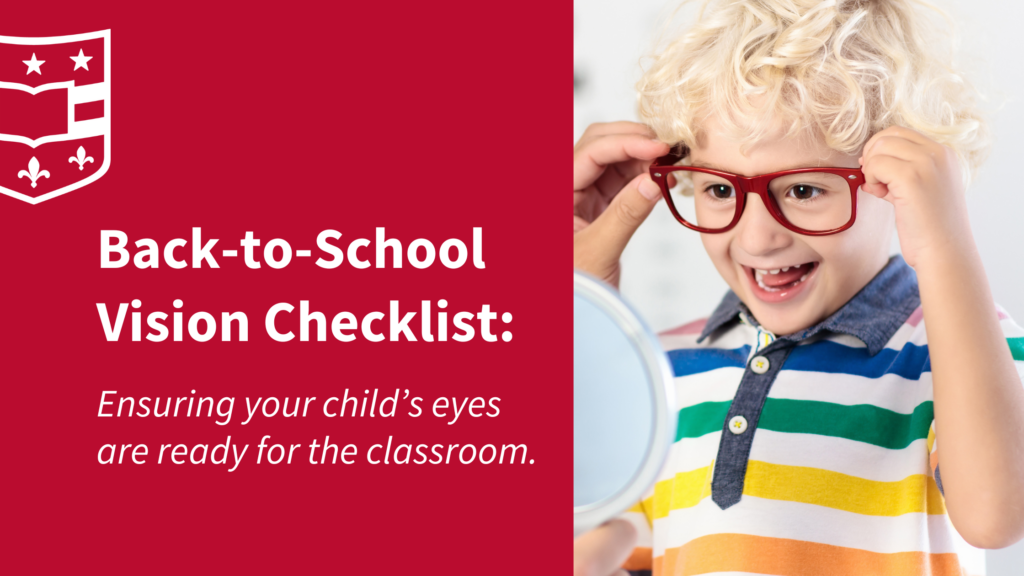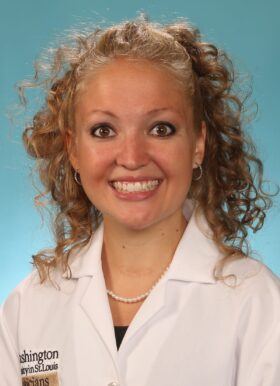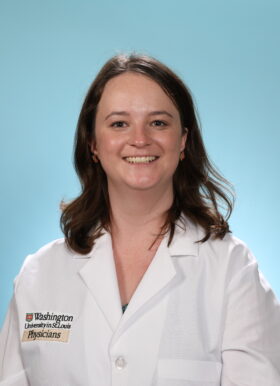As the back-to-school season approaches, parents are busy gathering supplies, organizing schedules, and preparing their children for a successful academic year. While shopping for notebooks and new clothes, it’s easy to overlook one critical aspect of your child’s readiness for school: their vision. Good vision is essential for learning and ensuring that your child’s eyes are healthy can significantly impact their performance in the classroom.

Here’s a comprehensive vision checklist to help you prepare your child for the upcoming school year:
Schedule a Comprehensive Eye Exam
While school vision screenings are valuable, they can miss issues that a comprehensive eye exam can detect. Regular eye exams can identify common problems like nearsightedness, farsightedness, astigmatism, and even more subtle conditions that could hinder your child’s ability to learn. Ideally, children should have their eyes checked before starting school and then regularly as recommended by your optometrist or ophthalmologist.
Monitor for Signs of Vision Problems
Children often don’t realize they have vision problems, so it’s important to watch for signs that may indicate an issue. Common signs include:
- Squinting or tilting the head to see better
- Holding books or screens too close to the face
- Frequent headaches or eye strain
- Difficulty focusing on the board or reading
- Avoiding activities that require close-up vision, like reading or homework
If you notice any of these signs, it’s crucial to schedule an eye exam as soon as possible.
Screen Time and Digital Eye Strain
In today’s digital age, children spend a significant amount of time on screens, both in and out of the classroom. Prolonged screen time can lead to digital eye strain, causing discomfort, blurred vision, and even headaches. To mitigate these effects, encourage your child to take regular breaks using the 20-20-20 rule: every 20 minutes, look at something 20 feet away for at least 20 seconds. Additionally, ensure their workspaces are well-lit and that screens are positioned at eye level to reduce strain.

Bethany Rosenthal, OD
Pediatric Optometrist, Ophthalmology and Visual Sciences
- Email: brosenthal@nospam.wustl.edu
“With increased screen time from Chromebooks, computers, and other technology, visual breaks and regular eye exams for school-age children are more important than ever. Eye strain, headaches, and dryness can go unnoticed, affecting their comfort and ability to learn. Regular eye exams ensure that children can see clearly, allowing them to focus on their education and reach their full potential – our ultimate goal for every child.”
Bethany Rosenthal, OD
Choose the Right Eyewear
If your child wears glasses or contact lenses, make sure their prescription is up-to-date before the school year begins. If your child is involved in sports, consider protective eyewear designed specifically for athletic activities. For children who spend a lot of time outdoors, prescription sunglasses with UV protection are also important to safeguard their eyes from harmful rays.
Promote Healthy Vision Habits
Teaching your child healthy habits can help maintain good vision throughout the school year. These habits include:
- Eating a balanced diet rich in fruits, vegetables, and omega-3 fatty acids, which support eye health
- Encouraging outdoor play to reduce the risk of developing myopia (nearsightedness)
- Ensuring they get adequate sleep to rest their eyes
Stay Informed About Vision Changes
Children’s vision can change rapidly as they grow, so it’s important to stay informed and proactive. Regular communication with your child about their vision is key—ask them how they’re seeing the board at school or if they’ve noticed any changes in their vision. Keeping in touch with their teacher can also help you catch any vision-related learning difficulties early.
A successful school year starts with good vision. By following this back-to-school vision checklist, you can ensure that your child’s eyes are ready for the classroom, setting them up for academic success. Remember, clear vision is not just about seeing well; it’s about learning well, too.
Don’t wait—schedule your child’s eye exam today and take the first step toward a bright and focused school year!
Pediatric Optometrists

Gabriel Burton, OD
Pediatric Optometrist, Ophthalmology and Visual Sciences
- Email: burtong@wustl.edu

Elizabeth Everson, OD
Pediatric Optometrist, Ophthalmology and Visual Sciences
- Email: e.everson@wustl.edu

James Hoekel, OD, FAAO
Assistant Professor, Ophthalmology and Visual Sciences
- Email: hoekel@wustl.edu

Amanda Nicklas, OD
Pediatric Optometrist, Ophthalmology and Visual Sciences
- Email: nicklasa@wustl.edu

Mark Rallo, OD
Instructor, Ophthalmology and Visual Sciences; Director of Pediatric Optometry
- Email: rallo@wustl.edu

Bethany Rosenthal, OD
Pediatric Optometrist, Ophthalmology and Visual Sciences
- Email: brosenthal@wustl.edu
